
iuniti tchuediuquêichiân: di ônli uei tchu cirizenchip
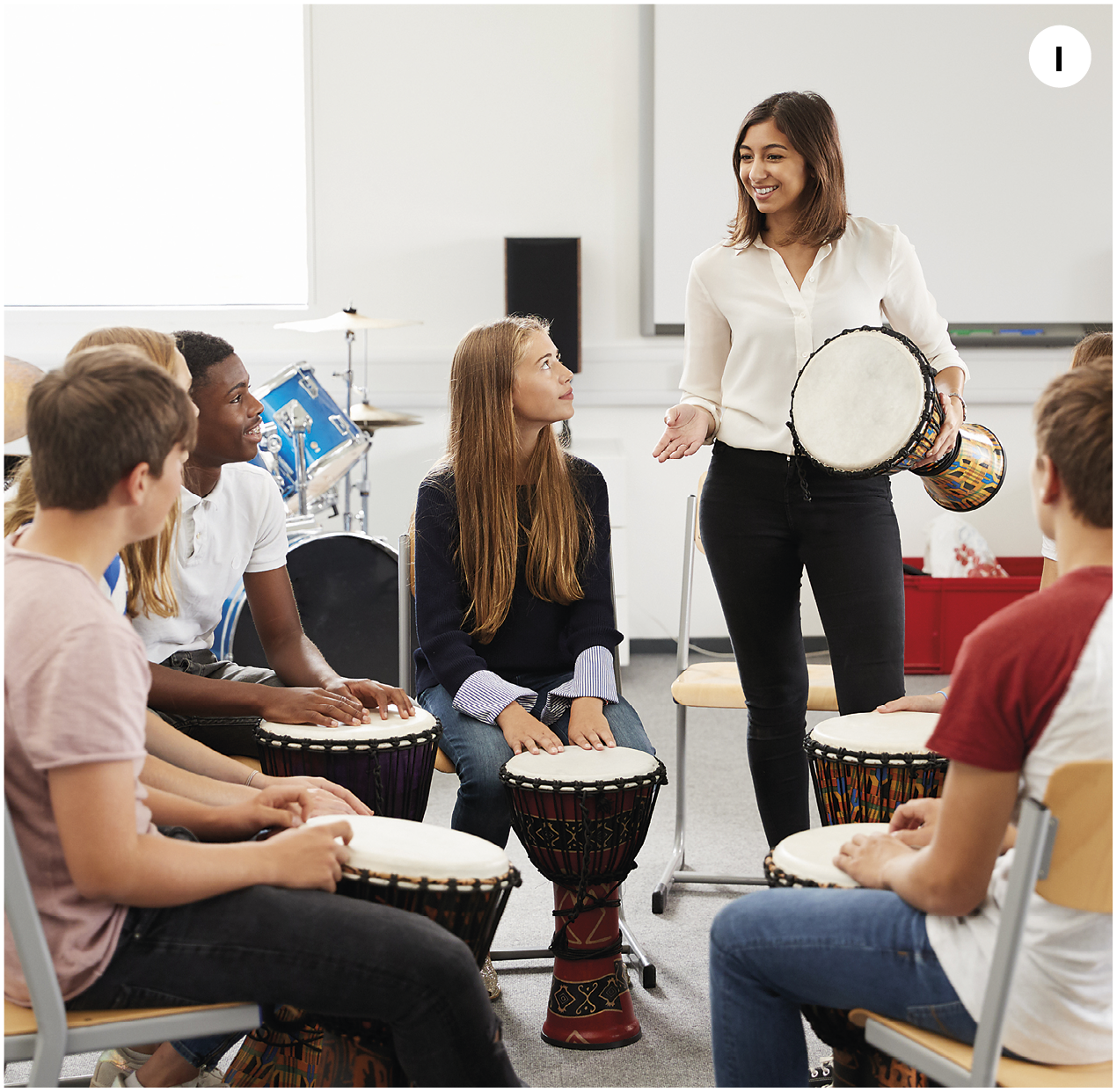
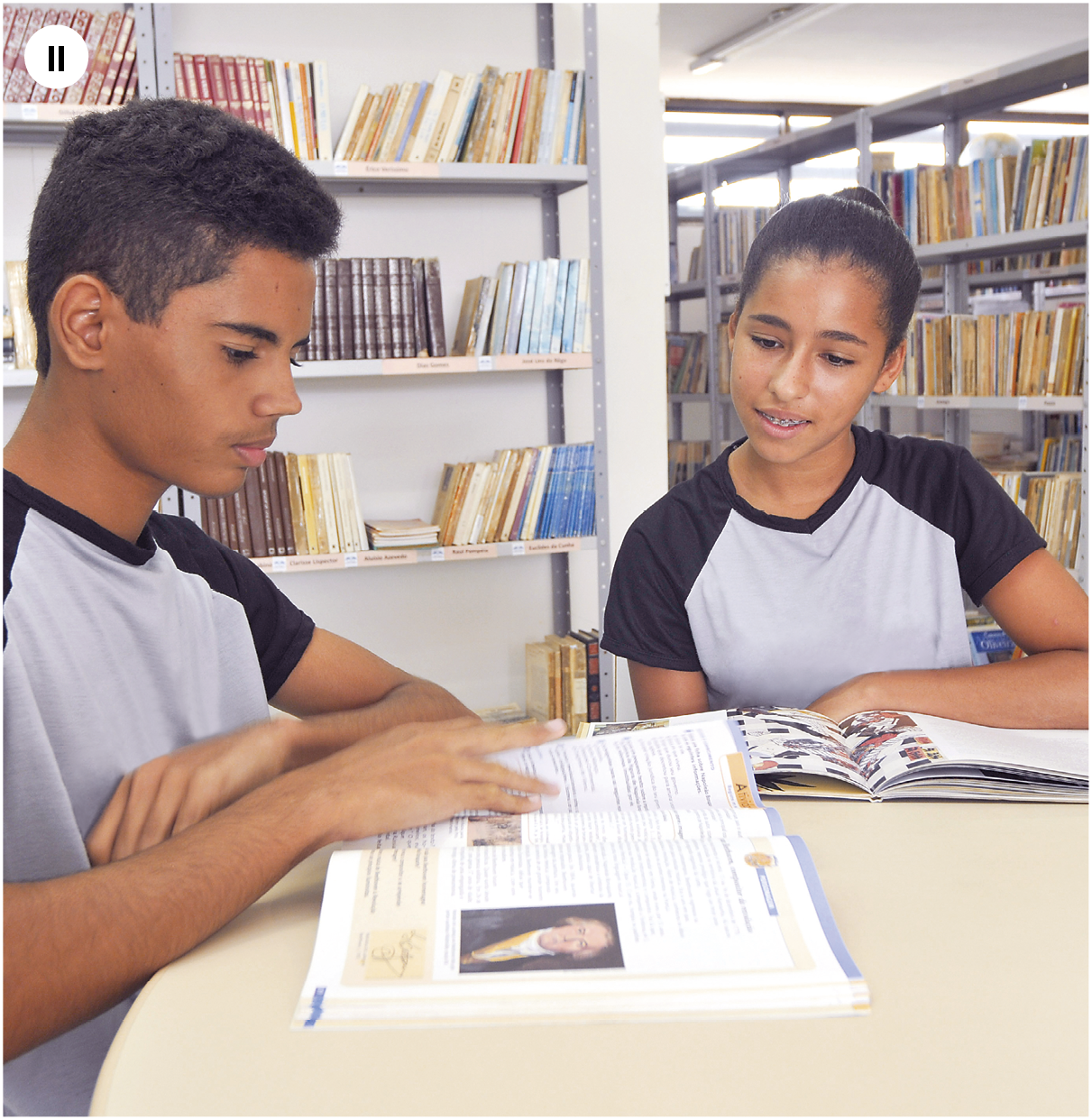
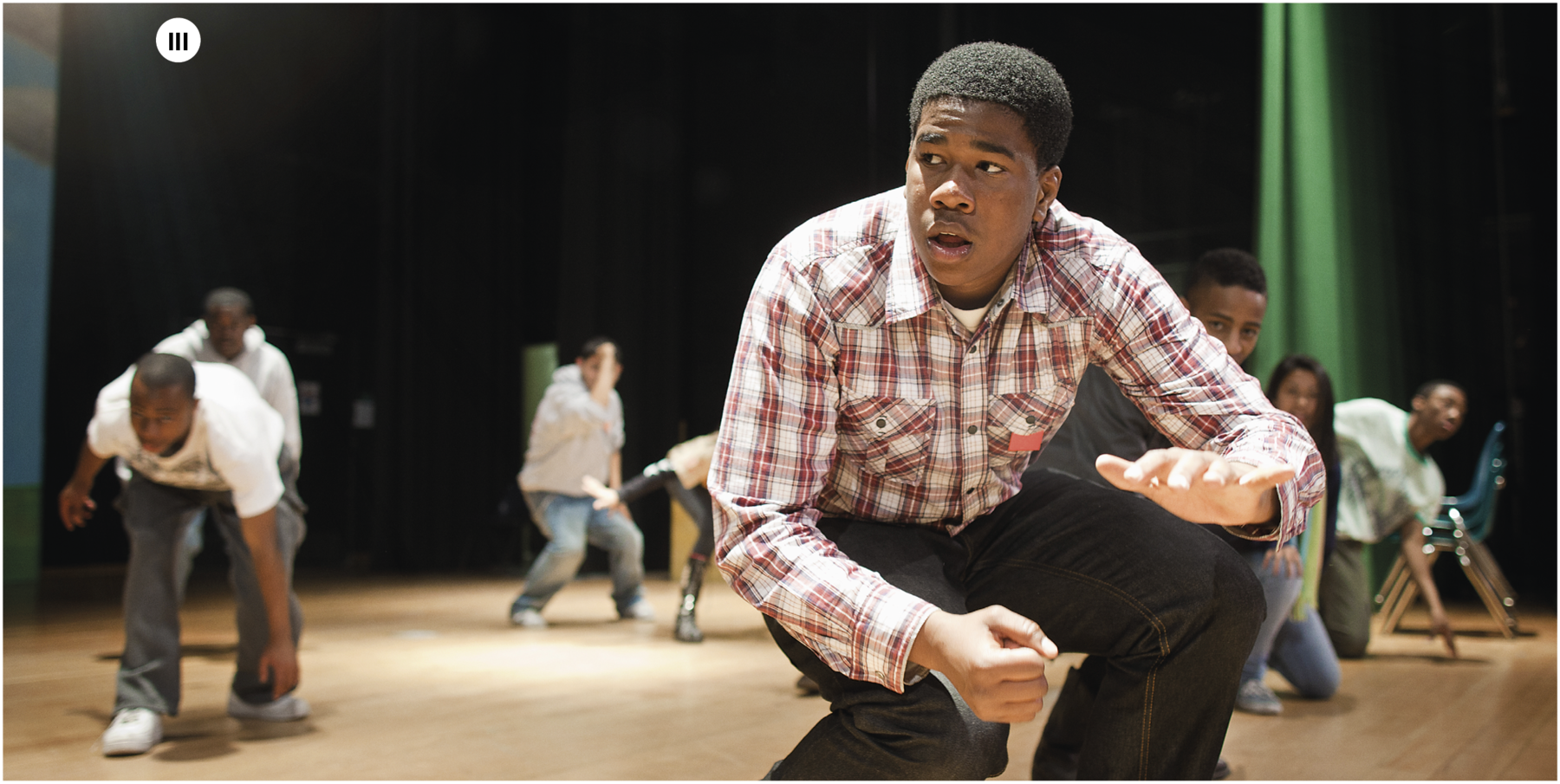
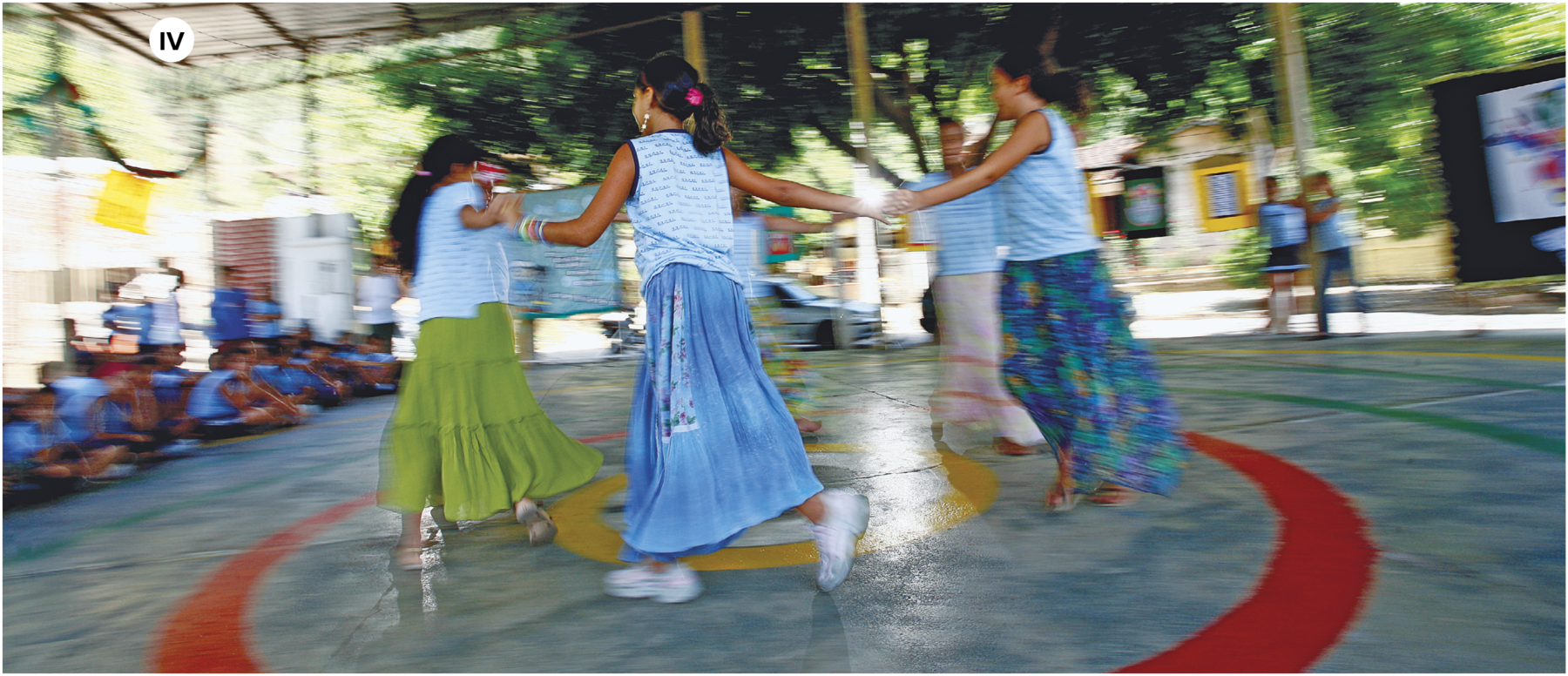
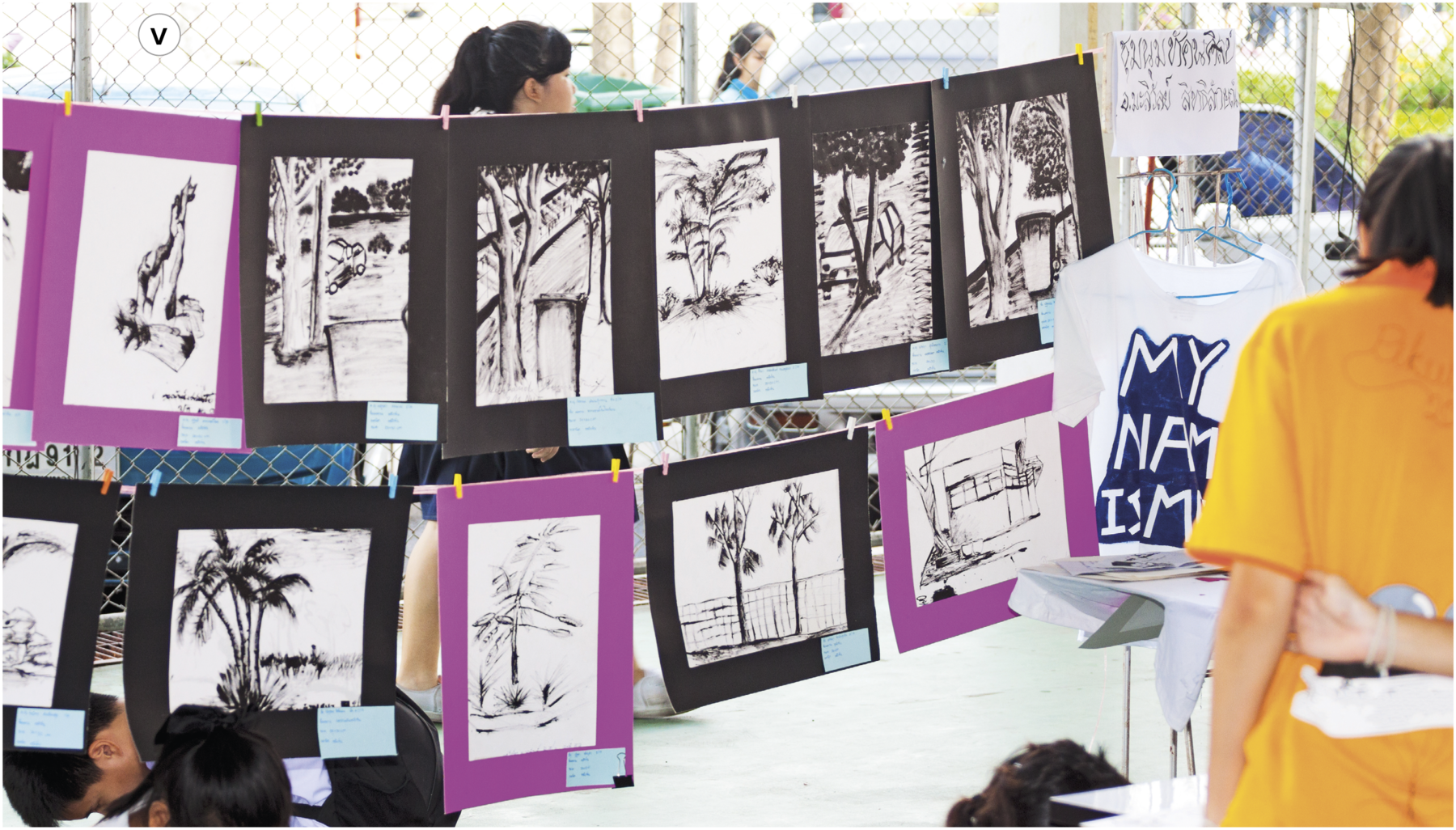
Gêneros discursivos: op-ed e apresentação institucional.
Tema: educação e cidadania.
Os objetivos desta unidade são:
- familiarizar-se com os gêneros discursivos óped e apresentação institucional;
- refletir sobre a educação e seu papel na sociedade.
taimi tchu finqui
Faça no caderno as questões de resposta escrita.

1.
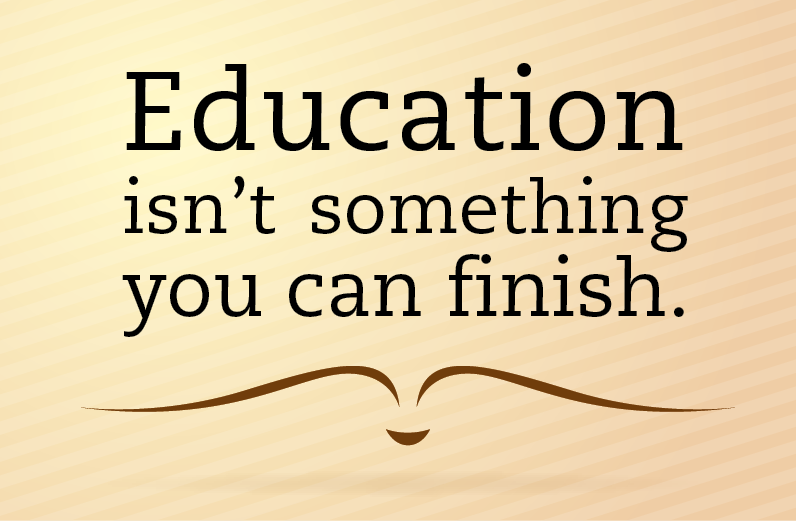
b.

2.

c.

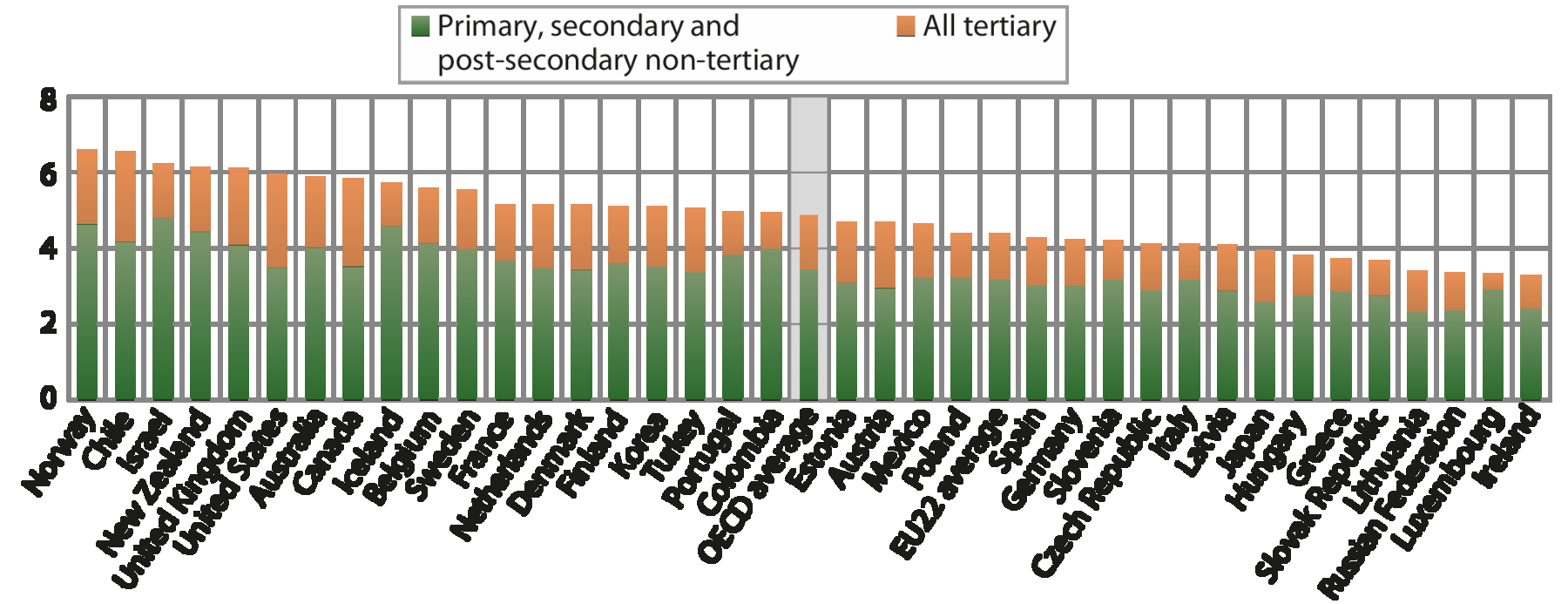
TOTAL expenditure on educational institutions as a percentage of GDP (2018). [sem local], 2021. OECDiLibrary. Education at a glance 2021: OECD Indicators. OECD/UIS/Eurostat (2021), Table C2.1.
II.
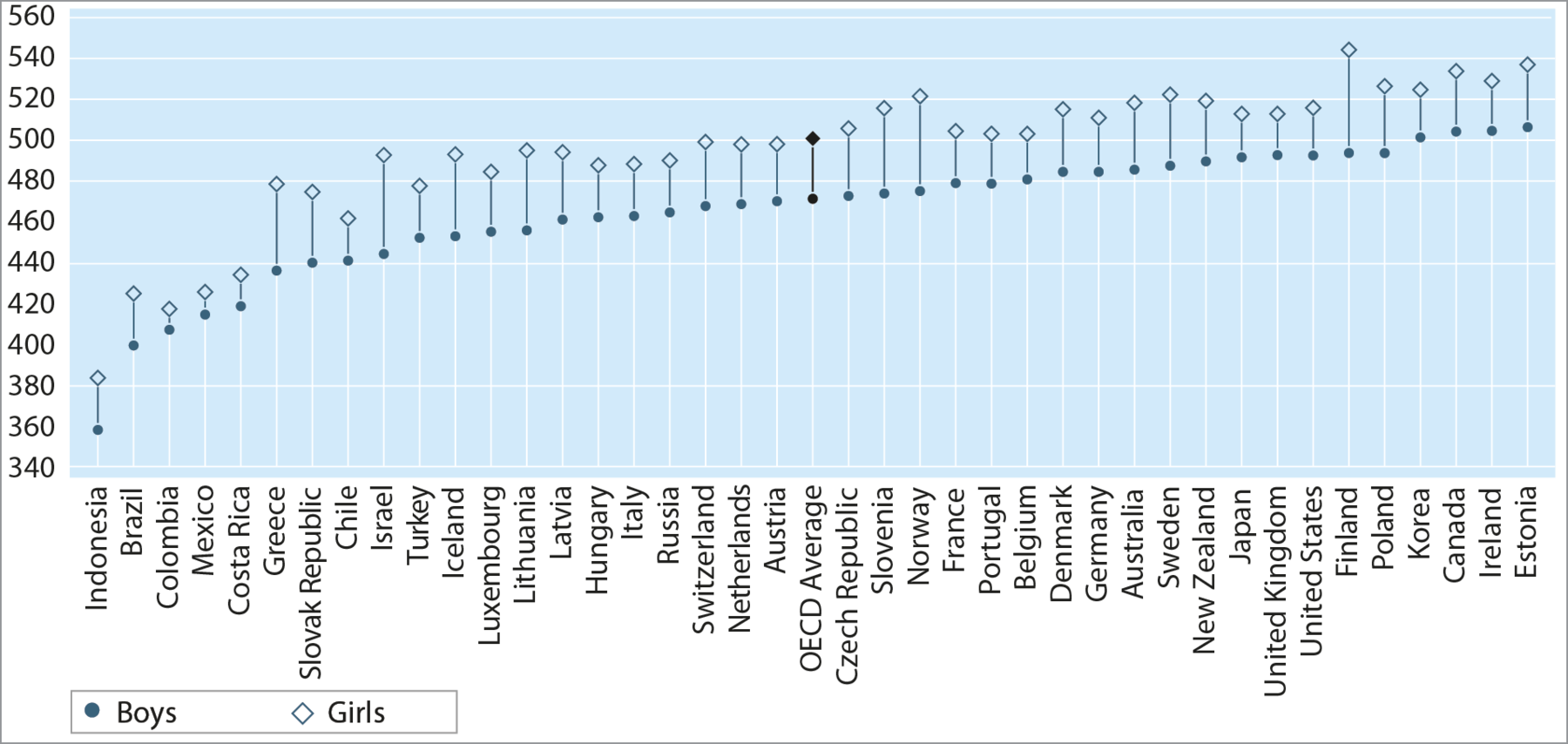
READING performance (PISA), [sem local], 2021. OECD Data.
Did you know?
• é o valor total de tudo que é produzido em um país durante um ano. Em português, chamamos de Produto Interno Bruto (Píbi).
- um?
- um?
- ”?
- .
- dois
f.
rídin
Faça no caderno as questões de resposta escrita.
tesqui uon
bifór rídin

- ríd tchu lârn
e.
ríd tchu lârn

Eyes on grammar – EXAMPLES 1 and 2
Arts education makes us better people
By John B. King
If you watched television in the 1980s, you may remember a commercial for a Broadway musical in which a theater patron exclaims after watching a show, “I laughed! I cried! I would see it again and again!” On a recent weekend when I saw my ninth-grade daughter in her school’s production of “The Three Musketeers,” I felt a kinship with that exuberant fan. It was not just the quality of the production or a father’s pride in his daughter’s performance that left me inspired; it also was that it served as a powerful reaffirmation of my belief in arts education.
For my daughter and her cast mates, putting on the play was a very meaningful learning experience. They had to grapple with the challenging language and historical context of a play adapted from a 19th-century French novel and set in the 17th century. The cast had to memorize lines, execute polished delivery, and master the choreography of sword fights, dances and slapstick humor.
These things required practice – the invaluable skill of doing something repeatedly that is at first unfamiliar and difficult, receiving feedback, and refining one’s approach so that success can be achieved.
The arts demand and teach self-discipline, perseverance, openness and the value of hard work. Arts education also unlocks creativity and self-expression.
[…]
For students who find it hard to say everything they want in an essay, the arts can help them demonstrate what they know. For students who have endured trauma, the arts can be a vehicle to process their pain and rediscover strength. For students who are outraged by injustices in their country or communities, the arts can help them express their truth. Even for students who never aspire to perform on Broadway or play Carnegie Hall, arts education can help them tap into their spirit and engage with the world.
I also appreciate the interdisciplinary nature of arts education.
When I was a Social Studies teacher, I loved teaching a unit on the Great Migration and the Harlem Renaissance through the lens of artistic expression. Students could see the migration unfold in Jacob Lawrence’s paintings. They could explore powerful messages conveyed through Augusta Savage’s sculptures and Aaron Douglas’ illustrations. They could hear African-Americans’ resolve in the face of lynching and racial violence in the poetry of Claude McKay and Langston Hughes. Students could admire the beauty of African-Americans’ everyday life through James Van Der Zee’s photography. And they could hear the Harlem Renaissance through Duke Ellington’s songs and Bessie Smith’s lyrics.
Immersion in these media deepened my students’ understanding of the nuances of American history and inspired them to express their own perspectives on contemporary social justice issues. reticências being on theater crew for musicals like “Grease” and “Godspell” and performing in plays helped ground me in a supportive community of peers and adults.
As an educator and parent, I appreciate how the arts have engaged and motivated my students and my daughters. But not every student in Maryland or other areas across the country has access to rich learning experiences in the arts. That must change.
So, at my daughter’s high school play, I laughed and I cried, and I reflected on my appreciation for the arts and how they move the world. Because how could one not be moved by Lin-Manuel Miranda’s performance in “Hamilton” or Frida Kahlo’s self-portraits or Yo-Yo Ma’s cello music?
And if each of us can be moved by art to connect more deeply with our own humanity and that of the artist, then arts education can help us better understand one another, make us more thoughtful citizens, and offer us profound hope.
John B. King Jr. is former U.S. Secretary of Education
KING JUNIOR, John B. Arts education makes us better people. The Baltimore Sun. Baltimore, Estados Unidos da América, 2 dezembro 2017. Opinião.
constrãquitchion minins

-
-
- .
- .
- .
-
- .
- .
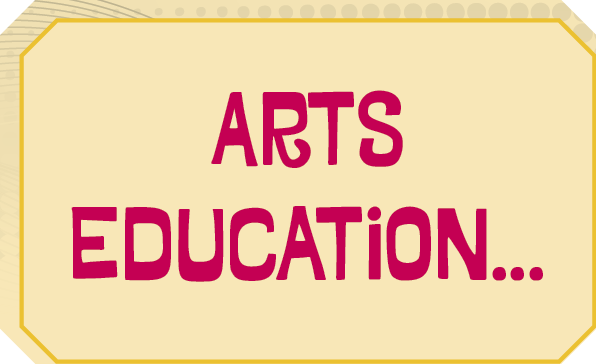
- .


-
- .
- .
-
tésqui tchu
bifór rídin

-
- tesqui uon ríd tchu lârn
- tesqui uon ríd tchu lârn
d. ríd tchu lârn
ríd tchu lârn

Eyes on grammar – EXAMPLE 2
Rethink school education
The shift to private education is not good. Government schools ought to be the drivers of change.
Uday Balakrishnan
NOVEMBER 29, 2017
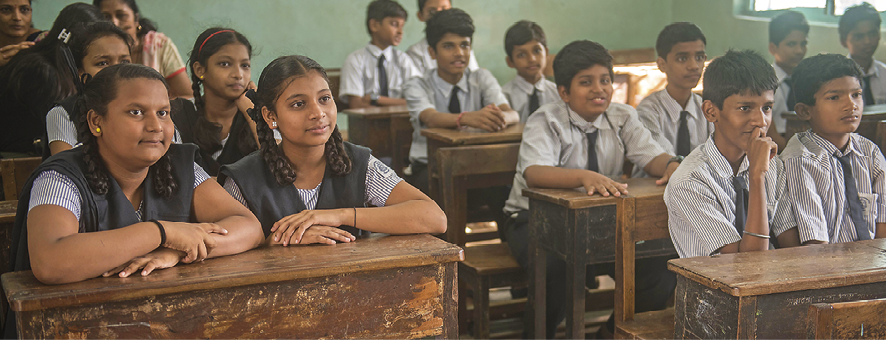
In Uncertain Glory – India and its Contradictions, Jean Drèze and Amartya Sen begin their chapter on education with a quote from Rabindranath Tagore: “The imposing tower of misery which today rests on the heart of India has its sole foundation in the absence of education.” This is as true today as it was nearly 90 years back.
While India highlights its ever-improving literacy levels, educationally it is a terrible under-performer, too embarrassed to participate in the OECD’s Programme for International Student Assessment tests covering reading and computational skills for 15-year-olds. Successive studies have repeatedly established that a majority of those in each class in India have educational attainments much lower than the one they are in. Data from the Ministry of Human Resource Development show that only half of all students who enter primary school make it to the upper primary level and less than half of that – around 25 million – get into the 9-12 class cycle. We have around a million primary schools and only half that number at the upper primary level. The number of secondary schools is less than 150,000 for a country of 1.3 billion, and even this comes down to just 100,000 at the higher secondary level. While there are around five million primary school teachers, at the secondary level the number is just 1.5 million. India has persisted with a schooling system that has long failed its young.
The inexorable shift to private school education, along with the Right to Education Act, represents a failure of the public school system. It is government schools that should be the drivers of change by becoming the first, not the last, choice of parents to send their children to. For that to happen, our public school system must be swiftly and radically revamped, while our teacher training institutions, of which the District Institutes of Education and Training constitute an important part, speedily re-jigged to turn out world-class teachers, of the kind that will encourage children to stay on in, not drop out of, school.
It is time that India began viewing school education as a critical strategic investment and gave it the status of a vital infrastructure project. As all in-country efforts have failed, we should go in for a radical overhaul of our educational infrastructure with the help of countries that have an amazing record in providing quality school education – Finland, for instance. We can surely afford to pay for that.
If only India had begun revamping school education at the start of economic liberalisation, it would by now have had the world’s largest pool of well-educated and highly trained workers. Fortunately, India continues to have the largest number of young people anywhere. By ensuring they get a world-class education over the next few decades, India will be well on its way towards becoming a developed nation sooner than expected. Uday Balakrishnan is visiting faculty at the Centre for Contemporary Studies, Indian Institute of Science, Bengaluru.
BALAKRISHNAN, U. Rethink school education. The Hindu, Chennai, Índia, 29 novembro 2017. Opinião.
constrãquitchion minins


-
-
- .
-
Think a little more

-
- De acordo com o texto da tesqui uon , o ensino de Arte é importante por diferentes razões. Que outro argumento, não mencionado no texto, vocês acrescentariam?
- A relevância da imersão em diferentes expressões artísticas é mencionada no texto da tesqui uon . Vocês concordam com a opinião sobre essa importância? Justifiquem.
- O texto da tésqui tchu defende que a educação na Índia deveria ser repensada. Vocês têm a mesma ideia sobre a educação no Brasil? Por quê? De que fórma?
- Qual é o posicionamento de vocês quanto aos investimentos feitos no sistema educacional brasileiro? Que argumentos vocês usariam para defender sua opinião?
e. Se vocês tivessem a oportunidade de escrever um óped, sobre o que vocês escreveriam?
LISTENING
Faça no caderno as questões de resposta escrita.
Before listening

-
-
- .
- .
-
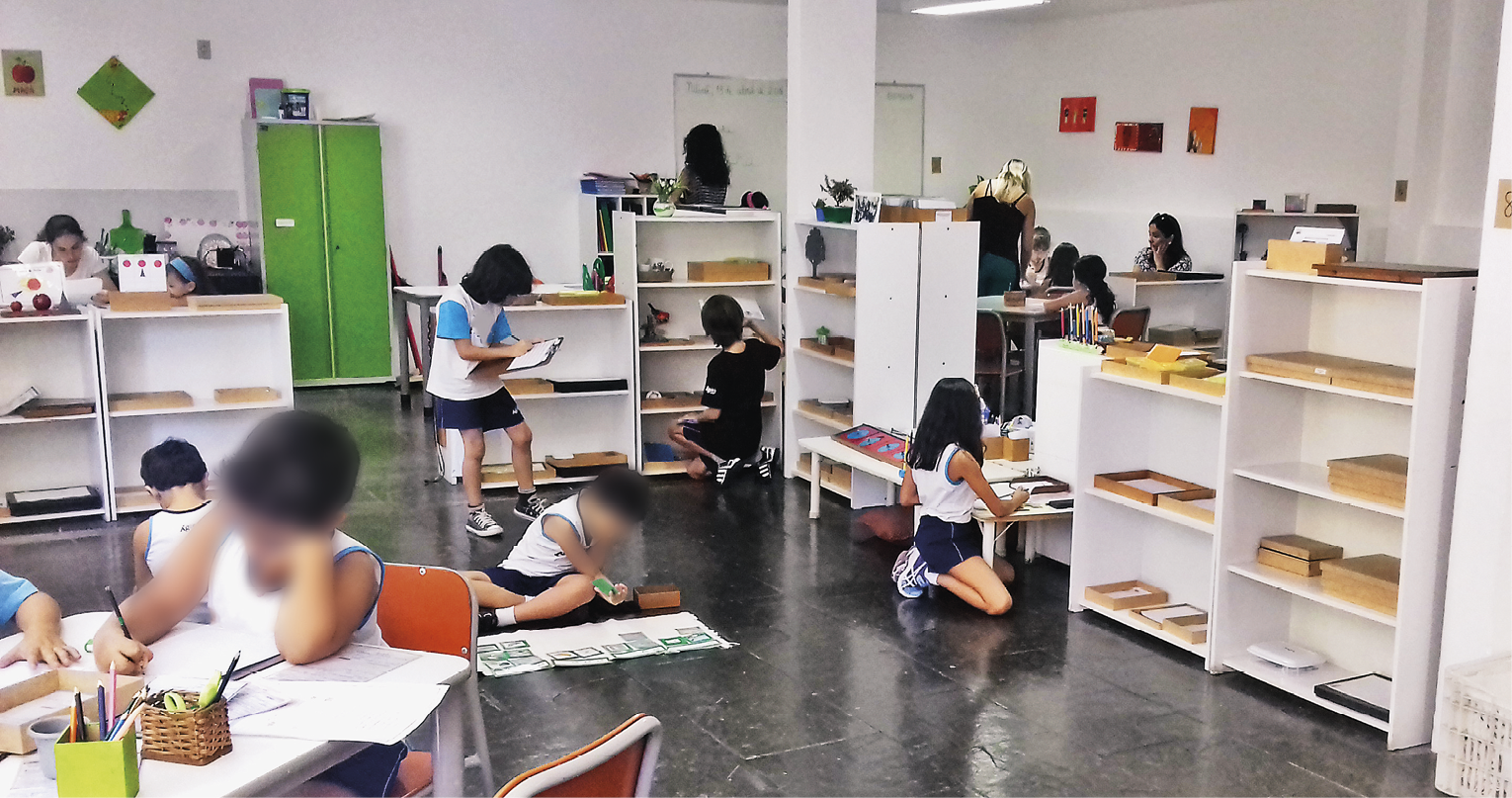

líssen tchu lârn

Institutional presentation – Parts um and dois
Title: Montessori Middle School
Date: August 7, 2015
Source: Rockford Public Schools
MONTESSORI Middle School (Full version). [sem local], 2015. 1 vídeo (3 minutos 21 segundos). Publicado por Rockford Public Schools. Disponível em: https://oeds.link/I0eYV6. Acesso em: 5 maio 2022.
Clique no play e acompanhe a reprodução do Áudio.
Clique no play e acompanhe a reprodução do Áudio.
constrãquitchion minins


- um.
- frómbifór listenin
-
- .
- principal .
- .
- tchitchers.


- um
- Some characteristics of this school are
- Some characteristics of this school are


- dois.
-
- .
- .
-
- .
- .
-
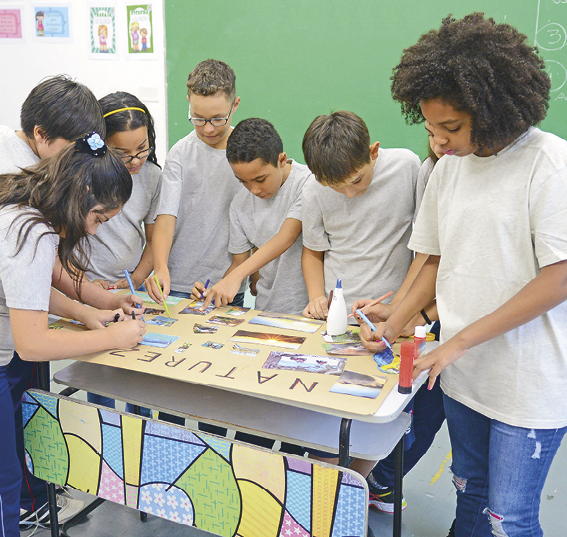
II.

III.


- umênddois
- bifór listenin
-
- .
- .
- .
-
- .
- .
-
- .
- .

- Discuss the following questions with a classmate.
- De acordo com a apresentação institucional que vocês ouviram, quais são as principais diferenças entre o método montessôri e outros métodos adotados na maioria das escolas?
- Vocês já estudaram em uma escola montessoriana? Compartilhem suas experiências. Se não estudaram, acham que seria uma experiência interessante? Por quê?
- Vocês consideram importante ter contato com diferentes perspectivas de aprendizado? Por quê? Comparem as respostas com a dos colegas.
- Vocês acham que escolas se beneficiam com métodos de ensino diferentes? Justifiquem sua opinião.
lenguagi in équitchon
Faça no caderno as questões de resposta escrita.

1. tesqui uon rídin.
“They had to grapple with the challenging language and historical context of a play adapted from a 19th-century French novel and set in the 17th century. The cast had to memorize lines, execute polished delivery, and master the choreography of sword fights, dances and slapstick humor.” (página 40)
“But not every student in Maryland or other areas across the country has access to rich learning experiences in the arts. That must change.” (página 41)
- previous excerpts,
- daut.
- .
- póssibíliti.
- tíéf
- “.
- “.
- ”.
- ”.

- following excerpts”.
- “révi tchu
- “uírévi tchu
- révi tchu
- “révi tchu
- “uírévi tchu
- “uírévi tchu
MINEO, L. Time to fix American education with race-for-space resolve. The Harvard Gazette, Cambridge, MA, EUA. 1 abril 2020. Disponível em: https://oeds.link/7V0Je9. Acesso em: 5 maio 2022.


- .
- .”?
Versão adaptada acessível
Atividade 4.
What does the connector "for instance" indicate in this excerpt: “As all in-country efforts have failed, we should go in for a radical overhaul of our educational infrastructure with the help of countries that have an amazing record in providing quality school education – Finland, for instance.”?
- .
- .
- .

5. .
but (quatro vezes) like (duas vezes) for instance
a.
We’ve certainly had school closures in particular jurisdictions after a natural disaster, (um) espaço para resposta in New Orleans after the hurricane. (dois) espaço para resposta on this scale? No, certainly not in my lifetime. There were substantial closings in many places during the 1918 Spanish Flu, some as long as four months, (três) espaço para resposta not as widespread as those we’re seeing today.
b.
We tried with our education reforms to build a 21st-century education system, (I) espaço para resposta the results of that movement have been modest. We are still a nation at risk. We need another paradigm shift, where we look at our goals and aspirations for education, which are summed up in phrases (dois) espaço para resposta ‘No Child Left Behind,’ ‛Every Student Succeeds,’ and ‘All Means All,’ and figure out how to build a system that has the capacity to deliver on that promise of equity and excellence in education for all of our students, and all means all. We’ve got that opportunity now. I hope we don’t fail to take advantage of it in a misguided rush to restore the status quo.
MINEO, L. Time to fix American education with race-for-space resolve. The Harvard Gazette, Cambridge, Maranhão, Estados Unidos da América. 1 abril. 2020. Disponível em: https://oeds.link/7V0Je9. Acesso em: 5 maio 2022.
c.
“Our effective partnership has achieved large-scale results for children. espaço para resposta, hundreds of thousands of children in Lebanon – many of them refugees – received free access to primary school, while over five thousand teachers received support to improve the quality of education in Turkey, and over 160,000 children received psychosocial support in Jordan.”
UNICEF. Advancing children’s rights in the EU neighbourhood: UNICEF and the Directorate-General for Neighbourhood and Enlargement Negotiations (DG NEAR). Disponível em: https://oeds.link/CJIca3. Acesso em: 5 maio 2022.

6.
Versão adaptada acessível
Atividade 6.
Read the excerpts of the op-eds you read in the Reading section of this unit and match the connectors "but", "like" and "for instance" to the idea they express.
- “bãt.” (página 41)
- “laiqui .” (página 41)
- “.” (página 43)
- cóntrést.
- egzâmplifiquêichiân.
ispíquin
Faça no caderno as questões de resposta escrita.
rit de rroudi
In groups, you are going to create an institutional presentation about your own school. This will be a whole class project, but each group will be responsible for a specific task. Remember you have already seen an example of institutional presentation in Listening.
1.
For the oral production
What is the discursive genre? Institutional presentation.
What is the theme? Our school.
What is the objective? To create an institutional presentation about your own school.
At whom is it aimed? The school community.
How and where is it going to be published? On the school website, blog or any other available platform. If it is not possible, it will be presented to the whole class in the classroom.
Who is going to participate? The whole class, organized into groups.
Toolbox


-
- etcétera
j.
Step back


2.
piti istopi
Faça no caderno as questões de resposta escrita.

thinkirôver
Faça no caderno as questões de resposta escrita.

-
- Consigo compreender apresentações institucionais?
- Consigo criar apresentações institucionais?
- Aprendi algo novo sobre e apresentações institucionais?
- Refleti criticamente sobre educação?
- Compreendi a relação entre educação e cidadania?
- Participei ativamente das aulas, cooperando com o professor ou a professora e os ou as colegas?
áison grémer
Leia os exemplos extraídos dos textos desta unidade, bem como as palavras e expressões destacadas. Preste atenção às observações que as seguem.
Versão adaptada acessível
Eyes on Grammar.
Leia os exemplos extraídos dos textos desta unidade. Preste atenção às palavras e expressões que serão explicadas pelas observações que as seguem.
egzâmpol uan
Versão adaptada acessível
Example 1 – had to/must
“They had to grapple with the challenging language and historical context of a play adapted from a 19th-century French novel and set in the 17th century.
has access to rich learning experiences in the arts. That must change.”
(página40)
|
MUST – NECESSITY / OBLIGATION |
||
|---|---|---|
|
Affirmative / Afirmativa |
I/YOU/WE/THEY must change |
HE/SHE/IT must change |
|
Interrogative / Interrogativa |
MUST I/YOU/WE THEY change? |
MUST HE/SHE /IT change? |
- mãsti é usado apenas no presente quando estamos nos referindo às ideias de necessidade e obrigação. Caso desejemos nos referir ao passado, temos de empregar rréd tchu.
- mãsti quando usado na negativa (mâssant) adquire sentido de proibição.
|
HAVE TO – NECESSSITY / OBLIGATION NECESSIDADE / OBRIGAÇÃO |
HAD TO – NECESSITY / OBLIGATION NECESSIDADE / OBRIGAÇÃO |
|
|---|---|---|
|
Present / Presente |
Past / Passado |
|
|
Afirmative / Afirmativa |
I/YOU/WE/THEY have to learn |
I/YOU/WE/THEY had to study |
|
HE/SHE/IT has to learn |
HE/SHE/IT had to study |
|
|
Interrogative / Interrogativa |
Do I/YOU/WE/THEY HAVE to learn? |
Did I/YOU/WE/THEY have to study? |
|
Does HE/SHE/IT HAVE to learn? |
Did HE/SHE/IT have to study? |
• révi tchu, quando usado em outros tempos verbais, se utilizará dos auxiliares desses tempos. exemplo
egzâmpol tchu
Versão adaptada acessível
Example 2 – like/for instance
being on theater crew for musicals like ‘Grease’ and ‘Godspell’ and performing in plays helped ground me in a supportive community of peers and adults.”
(página 41)
“As all in-country efforts have failed, we should go in for a radical overhaul of our educational infrastructure with the help of countries that have an amazing record in providing quality school education – Finland, for instance.”
(página 43)
|
Contrast / Contraste |
but |
|---|---|
|
Exemplification / Exemplificação |
for instance, like |
• Conectores podem ter significados diferentes de acordo com o contexto.